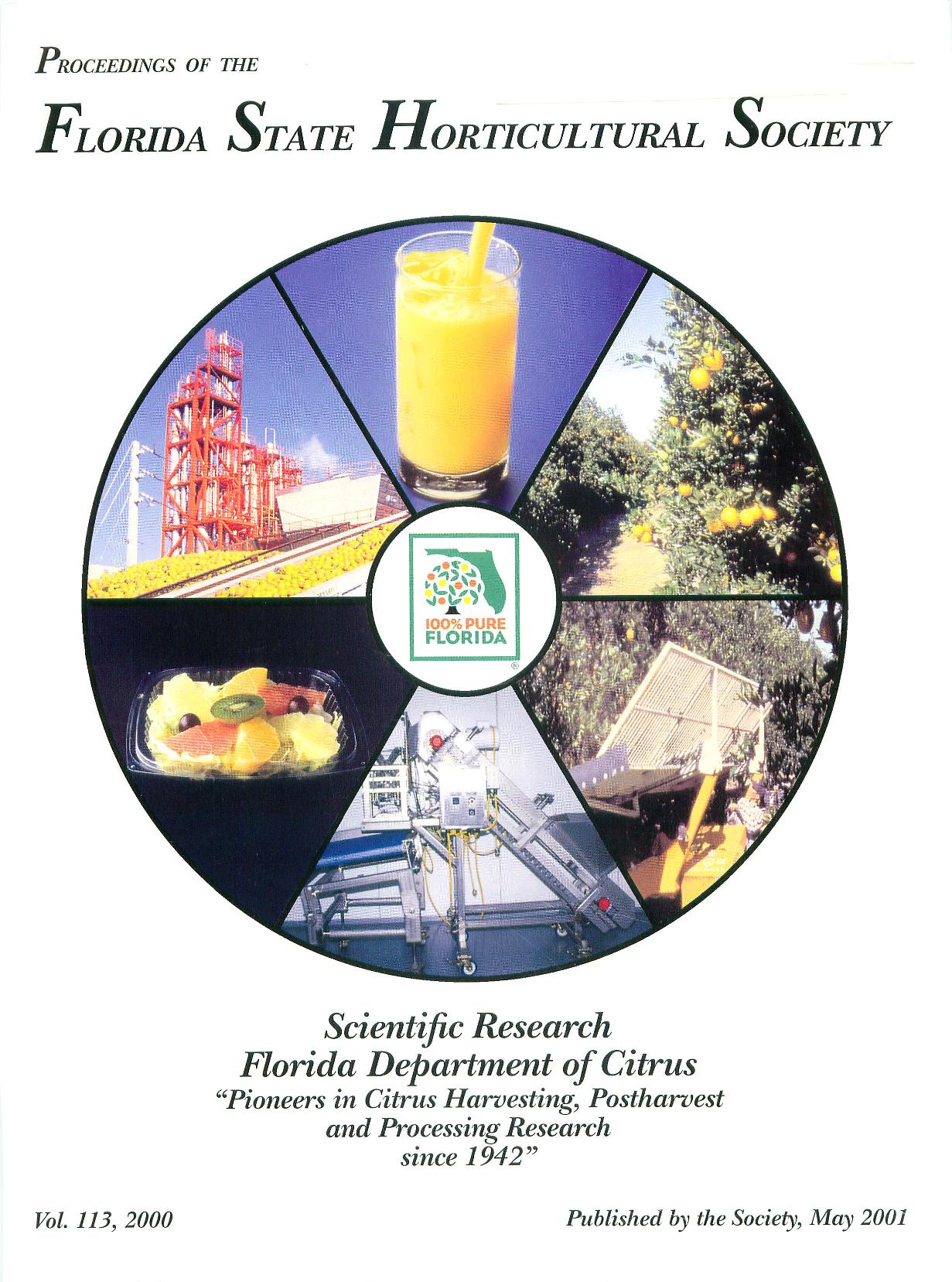Citrus
Factors influencing the effectiveness of ethephon as a citrus fruit abscission agent
Abstract
[Citrus sinensis (L.) Osb.] orange trees in five separate exper iments and in two experiments using 'Robinson' ('Clementine' x 'Orlando', C. reticulata Blanco) and 'Sunburst' ['Robinson' x 'Osceola', C. reticulata Blanco x (C. paradisi Mact x C. reticulata)] tangerines to determine its effectiveness as a fruit loosening agent for aiding mechanical harvesters. Ethephon concentrations of 200 mgL1 to 500 mgL1 were effective in loosening all cultivars tested. When applied alone to 'Hamlin' trees, ethephon slightly reduced fruit detachment force but increased leaf drop over control trees to undesirable levels. The addition of adjuvants increased the activity of ethephon at 500 mgL1 resulting in good fruit abscission but excessive defoliation. Calcium hydroxide [Ca(OH)J, calcium acetate[Ca(C2H3O2)2], and monopotassium phosphate (IC>HPO4) applied with ethephon as safening agents reduced ethephoninduced
defoliation only in 'Robinson' and 'Sunburst' tangerines, not in 'Hamlin' oranges. Likewise, the growth regulators napthalene acetic acid (NAA), methyl decanoate, and nonano-ic acid in combination with ethephon did not reduce the level of ethephon-induced defoliation. In all cases where ethephon caused significant fruit loosening, unacceptable defoliation resulted. Only CMN-Pyrazole decreased the fruit detachment force to desirable levels without causing significant leaf abscission. Based on these studies ethephon is not recommended for commercial use on 'Hamlin' oranges.

